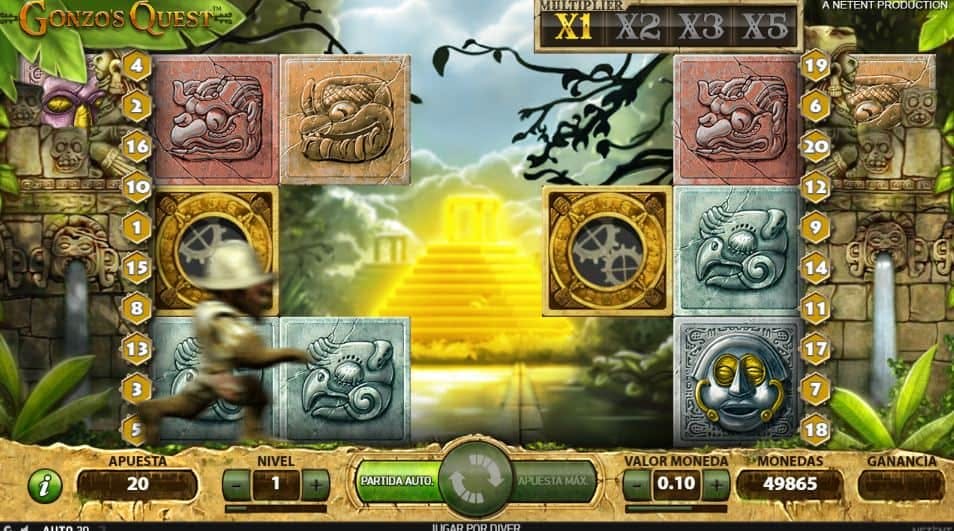Modern gaming is a fascinating blend of randomness and structured guidelines that together create engaging, fair, and unpredictable experiences. Central to this dynamic are the concepts of chance—the element of luck or randomness—and rules—the carefully crafted frameworks that govern gameplay. Understanding how these elements interact not only enriches our appreciation of games but also reveals insights into game design, psychology, and cultural perceptions.
Table of Contents
- Introduction to How Chance and Rules Shape Modern Games
- The Role of Chance in Modern Games
- The Role of Rules in Structuring Gameplay
- Interplay Between Chance and Rules
- Modern Game Examples Demonstrating Chance and Rules
- Non-Obvious Dimensions of Chance and Rules in Game Design
- Designing for Balance: How Developers Use Chance and Rules to Shape Player Experience
- Future Trends: How Chance and Rules Will Continue to Evolve in Modern Games
- Conclusion
Introduction to How Chance and Rules Shape Modern Games
At their core, chance refers to the elements of randomness within a game—such as rolling dice, drawing cards, or generating random numbers—while rules are the structured guidelines that define how players interact with the game environment. These components are fundamental in shaping the gaming experience, affecting fairness, excitement, and strategic depth.
Game designers deliberately balance chance and rules to maintain player engagement, ensuring that games are neither purely luck-based nor entirely deterministic. This balance fosters replayability, strategic thinking, and emotional investment. In this article, we explore how these elements interact, exemplified through various traditional and modern games, including contemporary examples like 💸 AVIAMASTERS PLAY 🙌.
“The interplay of chance and rules is the secret sauce that makes modern games both unpredictable and fair, captivating players across generations.”
The Role of Chance in Modern Games
How randomness influences gameplay outcomes
Chance introduces variability into games, making each playthrough unique. For example, rolling dice can result in different outcomes even in identical situations, adding an element of unpredictability that keeps players engaged. In card games, drawing different cards creates diverse scenarios, encouraging strategic adaptation.
Examples of chance mechanisms: dice, card draws, random number generators
Traditional mechanisms like dice and cards have been used for centuries, but digital games now employ random number generators (RNGs) to simulate randomness. For instance, in role-playing games (RPGs), RNGs determine attack success or item drops, balancing excitement with fairness.
The psychological impact of chance on players’ motivation and risk-taking
Research shows that chance elements can boost motivation by creating suspense and hope. When players face risk, they often experience increased adrenaline, which enhances engagement. This is evident in casino-style games and competitive digital titles where luck can turn the tide unexpectedly, encouraging risk-taking and strategic decision-making.
The Role of Rules in Structuring Gameplay
Establishing fairness and consistency
Rules create a level playing field, ensuring that all participants understand and adhere to the same standards. This consistency fosters trust and allows players to develop strategies based on predictable systems, even when luck influences outcomes.
Balancing complexity and accessibility
Effective rules strike a balance—providing enough complexity to challenge experienced players while remaining accessible to newcomers. Clear, well-designed rules prevent confusion and enhance enjoyment across skill levels.
Rules as a framework for strategic depth and player agency
Rules define the possible actions, constraints, and strategies available. They empower players to make meaningful choices, fostering a sense of agency. For example, in modern board games, rule variations can introduce new tactical options, deepening gameplay.
Interplay Between Chance and Rules
How rules modulate the effect of chance
Rules can amplify, limit, or redirect the influence of chance. For instance, some games include mechanisms to mitigate bad luck, such as rerolls or card counters. Conversely, rules may also introduce elements that increase randomness, like unpredictable environmental hazards.
Case studies of games where chance and rules are tightly integrated
A classic example is poker, where rules govern betting and hand rankings, while chance determines card deals. In digital games like Aviamasters, game rules incorporate chance elements such as water loss or malfunctions, which influence outcomes and strategies.
The impact of this interplay on game fairness and replayability
When well-balanced, chance and rules create unpredictable yet fair experiences. This synergy encourages players to replay, continually discovering new strategies and outcomes, which is essential for long-term engagement.
Modern Game Examples Demonstrating Chance and Rules
Traditional board and card games
- Chess—strict rules with no chance, emphasizing skill
- Backgammon—dice introduce randomness, balanced by strategic movement
- Poker—chance in card dealing combined with betting strategies
Digital and video games with complex chance-rule systems
- RPGs like Skyrim—random loot drops governed by in-game rules
- Strategy titles like Civilization—chance influences combat outcomes, balanced by player decisions
- Multiplayer shooters—loot boxes and RNG elements affecting fairness and excitement
Aviamasters – Game Rules as a contemporary illustration
In 💸 AVIAMASTERS PLAY 🙌, the game integrates chance through elements like water loss and malfunctions, which can unpredictably alter game outcomes. Its rules also adjust dynamically, such as speed modes, to manage the influence of randomness and keep gameplay engaging.
Non-Obvious Dimensions of Chance and Rules in Game Design
Cultural and psychological perceptions of luck and fairness
Different cultures interpret luck and fairness variably, influencing game design choices. For example, some cultures favor skill-based games, viewing luck as unfair, while others embrace randomness as part of the excitement.
The evolution of rules to adapt to player expectations and technological advances
As technology evolves, rules adapt—integrating digital RNGs, online matchmaking, and real-time updates—to meet player expectations for fairness and variety. This evolution ensures games remain relevant and engaging across generations.
Ethical considerations: how chance can influence perceptions of fairness and integrity
The fairness of chance elements is critical; perceived bias or manipulation can undermine trust. Transparent rules and regulated RNGs are vital to uphold integrity, especially in competitive or monetized games.
Designing for Balance: How Developers Use Chance and Rules to Shape Player Experience
Strategies for balancing randomness with skill-based play
Effective game design involves controlling the level of randomness—using mechanics like rerolls, probability modifiers, or skill-based outcomes—to ensure that luck enhances rather than dominates gameplay. For instance, competitive card games often include rules that limit the impact of bad luck.
Examples of rule adjustments to optimize game engagement and fairness
- Implementing cooldowns or reroll limits in digital games
- Introducing skill-based modifiers that counteract poor luck
- Adjusting difficulty levels dynamically based on player performance
The role of chance and rules in fostering community and competitive play
Balanced interplay encourages social interaction, strategic collaboration, and competitive integrity. Well-designed chance mechanisms prevent frustration and promote a healthy competitive environment.
Future Trends: How Chance and Rules Will Continue to Evolve in Modern Games
Emerging technologies and their impact on randomness and rule complexity
Advancements like artificial intelligence, blockchain, and adaptive algorithms are poised to introduce new layers of unpredictability and fairness, allowing for personalized game experiences and transparent randomness.
Potential innovations inspired by current examples like Aviamasters
Future games may incorporate more sophisticated chance mechanisms, such as environmental unpredictability or machine learning-driven rule adjustments, enhancing realism and engagement.
Balancing unpredictability and structure in next-generation game design
Designers will need to carefully calibrate randomness and rules to create immersive yet fair experiences, leveraging technology to fine-tune this balance dynamically based on player feedback and data analytics.
Conclusion
The relationship between chance and rules is fundamental in shaping the landscape of modern gaming. When skillfully integrated, these elements produce experiences that are unpredictable, fair, and strategically rich. As game technology advances and player expectations evolve, understanding this dynamic will be essential for creators aiming to craft engaging and innovative games.
By studying examples from traditional games to cutting-edge titles like 💸 AVIAMASTERS PLAY 🙌, developers can learn how to harness chance and rules effectively. This synergy not only enhances gameplay but also sustains community interest, ensuring the future of gaming remains exciting and fair for all players.




Recent Comments